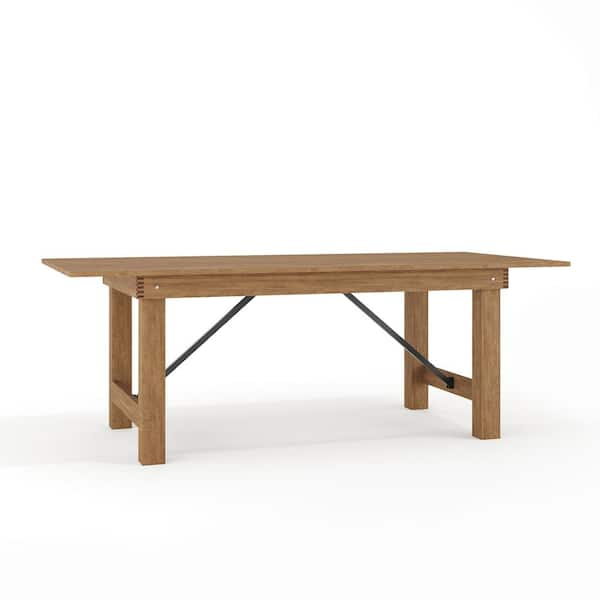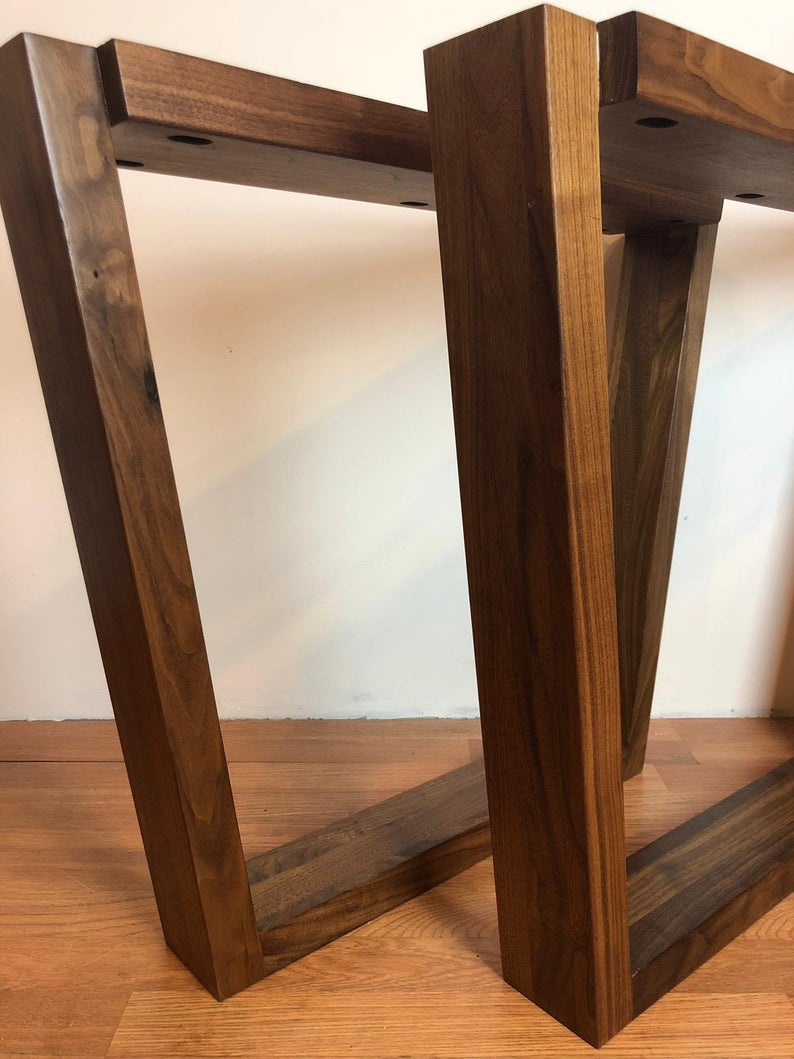Trick Variables to Bear In Mind for Eating Table Legs Timber Choices
When choosing wood for eating table legs, numerous crucial aspects necessitate careful consideration to make certain both functionality and visual allure. The selection of timber kind, identified by its resilience and special grain patterns, plays a crucial duty in the total layout and long life of the piece.
Timber Kind and Characteristics
When selecting timber for eating table legs, it is vital to comprehend the one-of-a-kind characteristics of various wood types. Different woods provide unique advantages and negative aspects, influencing both the sturdiness and visual allure of the completed item.
Hardwoods, such as oak, cherry, and maple, are frequently chosen for their stamina and resistance to wear. Oak, recognized for its remarkable longevity, also includes a noticeable grain that can include personality to the table. Maple uses a smooth surface area and is much less prone to warping, making it a dependable choice for functional furnishings. Cherry wood, with its abundant shade that strengthens with time, provides a luxurious look however might call for even more upkeep to stop scrapes.
On the other hand, softwoods like yearn and fir are more affordable and less complicated to function with, yet they are less long lasting than woods. Pine is lightweight and includes a cozy, rustic look, making it a popular option for casual eating setups. However, it is extra susceptible to dents and scratches.
Recognizing these attributes will certainly assist in making a notified choice to ensure the legs of the table satisfy both visual and functional demands.
Grain Patterns and Aesthetics
The wood's grain is not just an aesthetic quality; it conveys an one-of-a-kind character and appeal to each piece. Different wood types display unique grain patterns, varying from the straight lines of maple to the detailed swirls of oak and the striking figure of walnut.
Furthermore, the positioning and scale of the grain can influence the viewed size and elegance of the table. Bigger, more obvious grains might offer a strong, remarkable effect, while finer, subtler grains can produce a fine-tuned, understated look. In addition, the completing process can even more enhance these patterns, stressing the all-natural appeal of the timber and drawing out abundant colors.
Ultimately, the option of grain pattern ought to harmonize with other style elements, such as the table top and surrounding furniture, ensuring a natural aesthetic that elevates the eating experience. Thoughtful choice of wood grain not just adds to the table's beauty yet likewise reflects the proprietor's preference and design.
Toughness and Strength
The longevity and stamina of table legs are extremely important considerations for ensuring durability and security in any type of eating room. Selecting the right timber is essential, as various species show differing degrees of resilience. Hardwoods such as oak, maple, and cherry are commonly favored for their fundamental toughness and resistance to put on. These products not only withstand day-to-day usage but also sustain hefty loads, making them perfect for eating tables that frequently suit numerous diners. Dining Table Legs Wood.

Inevitably, buying top quality timber and durable building and construction approaches will certainly yield a table that stands the test of time, while offering a reliable structure for many dishes shared among friends and family. Prioritizing sturdiness and stamina makes certain that your dining table remains useful and cosmetically pleasing for years to find.
Maintenance and Care
Correct upkeep and treatment are essential for maintaining the toughness and toughness of table legs made from timber. Routine cleaning is important; utilizing a soft, moist towel guarantees that dust and debris do not accumulate, which can result in scrapes and dullness. It is advisable to stay clear of extreme chemicals or rough products that could harm the coating.
In addition, applying a suitable timber gloss or wax periodically can aid preserve the luster and safeguard the wood from moisture and spills. Nonetheless, it is vital to comply with the supplier's recommendations relating to the sort of product to use, as particular finishes might respond detrimentally to certain chemicals.
Moisture and temperature changes can likewise impact wood table legs, causing them to warp or fracture. It's ideal to place the table away from direct sunshine and warm resources. If the table legs have any type of scrapes or dents, attending linked here to these promptly can stop additional damages.
Finally, occasionally examining the joints and screws for tightness is essential to preserve architectural honesty (Dining Table Legs Wood). By adhering to these upkeep practices, house owners can guarantee their wooden table legs continue to be functional and attractive for several years ahead
Ecological Factors To Consider
When choosing timber for eating table legs, it's necessary to take environmental factors to consider into account. The sourcing and sustainability of wood are paramount in minimizing environmental influence. Going with wood from qualified resources, such as those recommended by the Woodland Stewardship Council (FSC), ensures that the lumber is collected properly, promoting forest preservation and biodiversity.

Furthermore, local sourcing of wood reduces transport emissions, supporting neighborhood economic climates while decreasing environmental impact. It is also advisable to be familiar with the timber's therapy and ending up procedures, as certain chemicals can be dangerous to both human wellness and the setting. By focusing on sustainable timber selections, customers can add to ecological conservation while enjoying the toughness and elegance of their table legs.
Verdict
In verdict, choosing timber for eating table legs necessitates mindful consideration of numerous variables, consisting of wood types, grain patterns, and resilience. Upkeep demands and ecological sustainability additional impact timber selections, emphasizing the relevance of sourcing from certified or recovered materials.
When selecting wood for eating table legs, a number of critical variables warrant careful factor to consider to make certain both performance and visual allure.Appropriate maintenance and care are vital for maintaining the toughness and toughness of dining table legs made from timber.When choosing wood for eating table legs, it's crucial to take environmental factors to consider right into account. By prioritizing lasting wood options, customers can contribute to environmental conservation while enjoying the resilience and beauty of their eating table legs.
In verdict, picking wood for eating table legs demands careful consideration of numerous elements, consisting of wood types, grain patterns, and sturdiness. Dining Table see it here Legs Wood.
Comments on “Discover Artisan-Made Dining Table Legs Wood for a Customized Complete”